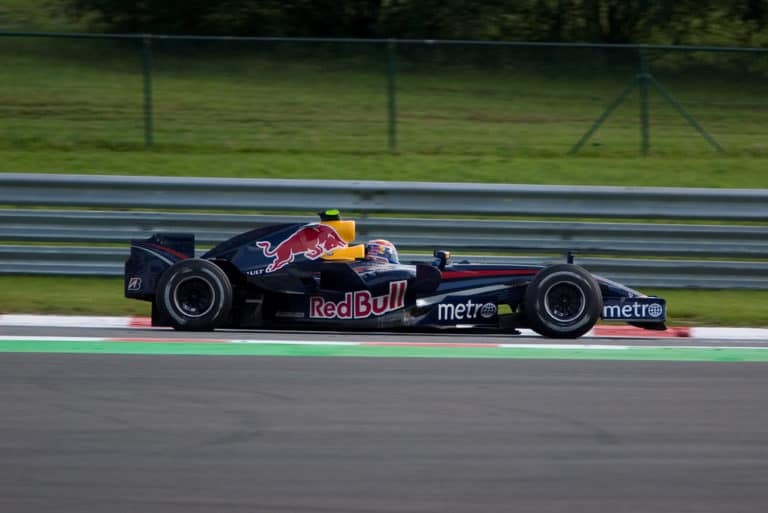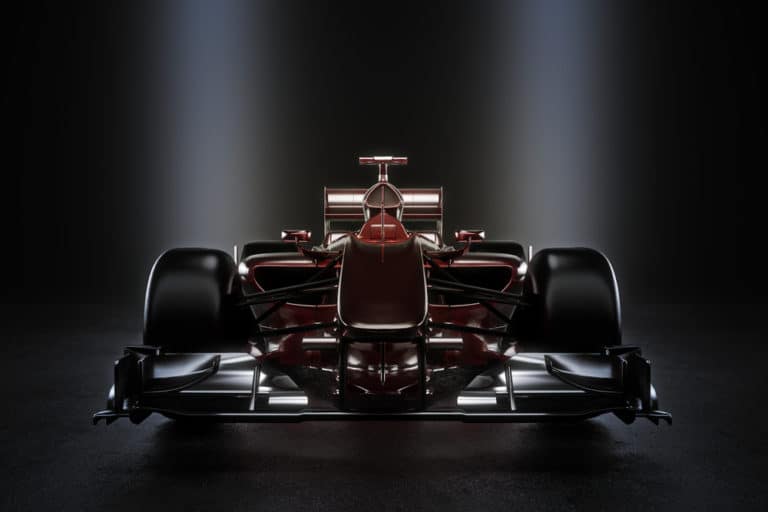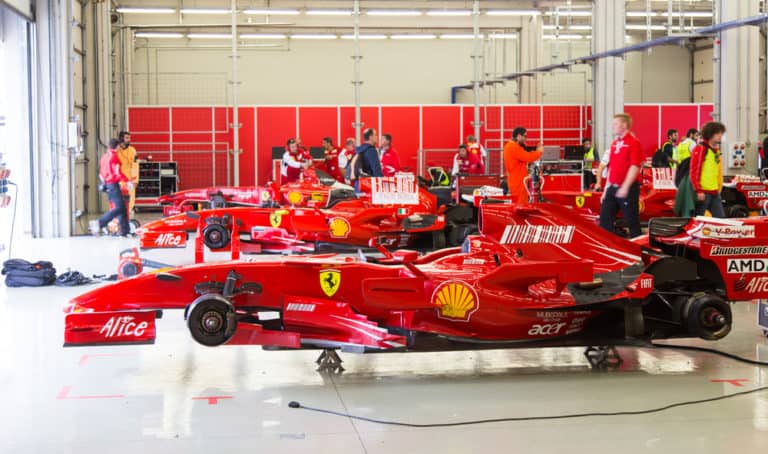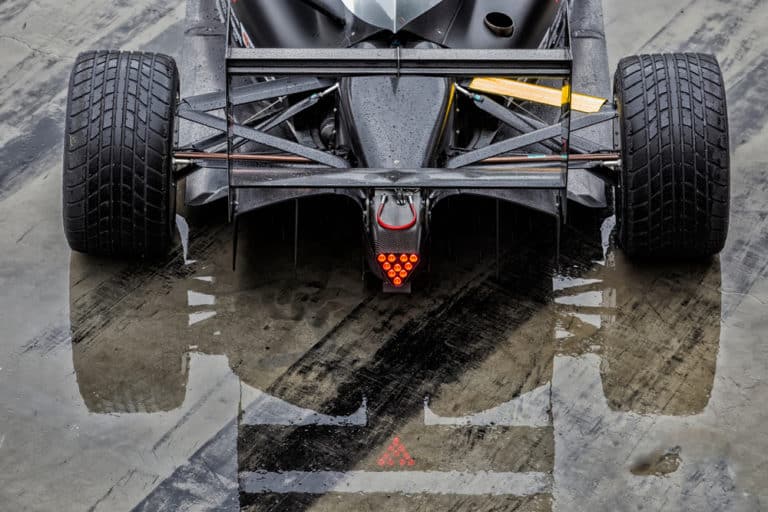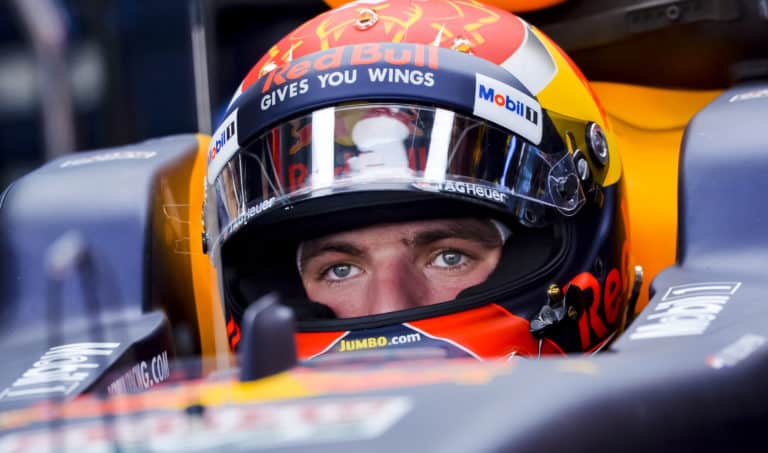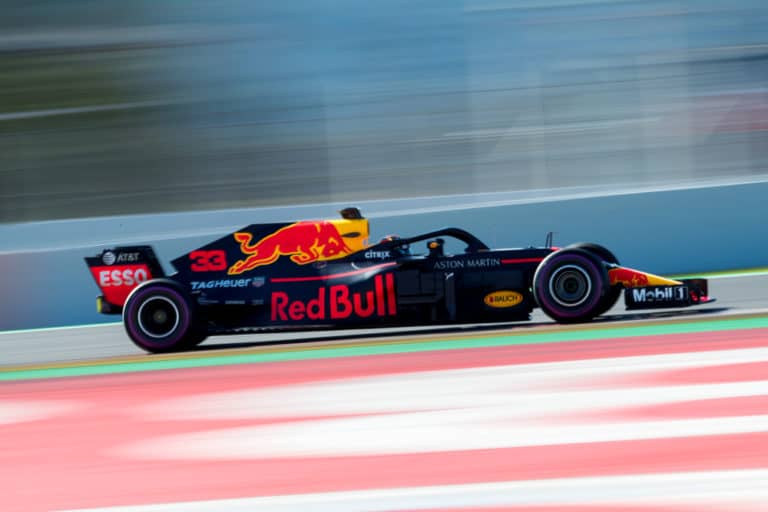Have you ever heard F1 drivers refer to trail braking? What is trail braking, and do F1 drivers use it? Let’s look at this advanced driving technique and its application to F1 racing.
Trail braking is a complex driving technique F1 drivers use. It involves keeping pressure on the brakes while turning into a corner. Trail breaking is hard to perfect and can be effective when applied correctly. However, trail braking greatly reduces the life of the tires when it is done too often.
F1 drivers use this advanced driving technique during races, but why do they use it, and how does it help their racing? There are many reasons why trail braking is effective in F1 racing, and this article will look at them all.
If you’re looking for some F1 merchandise, check out the awesome stuff at the official F1 store here.
Trail Braking Explained
An F1 race car’s brakes are much more than just for deceleration. The brakes allow the driver to manipulate and alter the car’s pitch as he comes into a corner, which is trail braking.
When a driver eases his brakes gradually when turning into a corner, he slowly releases brake pressure, increasing the car’s steering angle. Trail braking is described as braking slightly while turning into the corner.
This advanced driving technique is not what is usually taught at racing school to brake hard before the corner and then retting off the brakes before turning in.
Trail braking might sound easy, but in practice, it is complicated to achieve the right balance of steering and braking at the same time.
Trail braking manipulates the weight transfer of the F1 car. The car’s initial weight transfer will be gradual and slower as the driver is releasing the brakes, rather than abrupt and quick when stepping off the brakes fast. That allows the F1 car to be more balanced on the turn into the corner and that the entry speed will be quicker.
Successful trail braking allows complete tire grip when the driver enters the corner, which allows a driver to go faster.
Trail braking works on just about any circuit and is particularly effective when used correctly. When you look from outside, it looks like a driver is braking hard before turning into a corner, and then quickly points the nose toward the exit and applies the full throttle. That is essentially a sweet braking-initiated drift that is fast when it is done correctly.
Does Trail Braking Make an F1 Car Go Faster?
When trail braking is applied, it takes advantage of all the grip on the tires to make the corner entry speed fast. The technique makes the tires grip into the track more, making the F1 car go faster.
When the driver brakes, the car’s weight is moved forwards and over the front axle. When an F1 driver is trail braking, he keeps the light brake pressure while turning; by doing so, the driver keeps the weight over the front axle and causes the front tires to grip harder.
When we compare this to the racing school teachings of hard on the brakes and releasing the brakes entirely before a corner, the weight transfer in the car is different.
As soon as a driver steps hard on the brakes, the car’s weight is transferred to the front, just like trail braking, but as the driver lets the brake pressure off and starts to turn in, the weight transfer change to more neutral.
When Do F1 Drivers Use Trail Braking?
Trail braking is applied and found most functional in slow corners where the driver wants the car to rotate. An F1 driver can trail brake to let his car rotate faster before the apex and get back to full throttle quicker for a fast exit.
Applying trail braking in a fast corner is ineffective because the driver needs the car’s back to be planted to keep more weight over the car’s rear axle.
Not all circuit corners are good for trail braking, making this technique even more difficult to use. A driver can find himself adjusting his trail braking on the same corner several times during the race.
What Are the Factors that Can Influence Trail braking?
Several factors can influence a driver’s ability to trail brake.
Primarily, how fast can the car go? How quick can the car stop? How effective are the brakes? These factors will influence which corners a driver can trail brake successfully.
A good driver will know his car; knowing the car is key to successful trail braking. Learning how much braking to apply and how the car behaves under those conditions takes practice and time to perfect.
Whenever any driver learns a new technique, it is better to start earlier and easier. Always start a little lighter and then build up to speed. A car’s setup is also important. Changing brake pads and tires can make a big difference in a successful trail brake.
Unfortunately, things get more complicated. Although a driver may be driving the same car during an F1 race, he can apply different brake pressure when trail braking, affecting the effectiveness.
Another factor to consider is when the track heats up and the tires lose grip. Moisture in a corner can also affect the ability of a driver to trail brake into a corner successfully. As the driver experiences several levels of grip, it can affect the success of trail braking into a corner.
These advanced driving skills set the great F1 drivers separate from the mediocre ones. For example, looking at Lewis Hamilton, it seems that he knows precisely the amount of grip he has each time, and his trail braking is effective almost all the time.
A driver can use trail braking effectively when he is trying to solve oversteering or understeering issues on the entry of a corner.
Typically, the balance of a driver’s car is affected by which end of his car has more grip, and applying trail braking; the driver can influence the balance slightly.
If a driver’s car is understeering as soon as he turns in and is grappling with hitting the apex of the corner, he can apply trail braking to help shift the car’s weight onto the front axle get the front tires to grip harder. This means a driver leaves the brakes on a little later than general to keep the weight transfer over the car’s front axle.
Learn How to Trail Brake
We explained how trail braking is applied and how it makes a car go faster, now let’s look at this advanced driving technique in detail.
If a driver wants to master the technique, he can accomplish it by using his right foot on the brake, or if preferred, he can just as effectively do it with his left foot.
Some drivers are heel-toe drivers, but the more practice and drive time a driver gets in his car, the more it will come together for him.
Trail braking requires a lot of practice and time to learn correctly, and this is how it is done in 4 steps:
1. Brake hard and late straight
A driver should start to brake hard and straight to the maximum when reaching a corner. Try to brake later than general because hitting the brakes for longer allows the car to slow down.
2. Slightly step off the brakes
A driver should slightly step off the brakes as he gets near the corner. The braking force will reduce from 100% to 60% within a split second. A driver initially reduces brake pressure fast but still applies lighter brake pressure while turning.
3. Now, start turning into the corner
As the driver releases the brake pressure, he turns into the corner, trying for the corner’s apex. Turning is the most difficult part of perfecting trail braking because most drivers were taught not to brake and turn simultaneously.
4. At the same time, decrease brake pressure and increase steering angle
From this point, the steering angle increases while reducing brake pressure simultaneously. The hard part is to get the left foot to work simultaneously with your steering.
Typically, the driver lifts his foot off the brake while turning the steering wheel, this step can be confusing and the most difficult to learn.
The point is to pinpoint the grip limit and keep the car balanced with braking through the corner entry. This step requires a lot of training and should be practiced to perfection in simulators or during testing before a driver tries to find his limit on the track.
Why Does an F1 Driver Want to Keep the Weight on the Car’s Front?
The two primary reasons an F1 driver wants to keep weight on the car’s front is to spend more time at full throttle:
- Shifting the braking zone: An F1 driver wants to maximize time at full throttle during a race. He can shift his braking zone closer to the corner’s apex when he trail brakes. When a driver only brakes straight, he has to brake earlier, which means less time on full throttle into the corner.
- Rotation: When an F1 driver uses trail braking, it allows him back to full throttle earlier at corner exits. The weight on the car’s front gives rotation at corner entry through the apex. The car gets a better angle at the apex, allowing earlier unwinding of the steering wheel at the corner exit. Both instances allow an F1 driver to get back to the full-throttle more quickly.
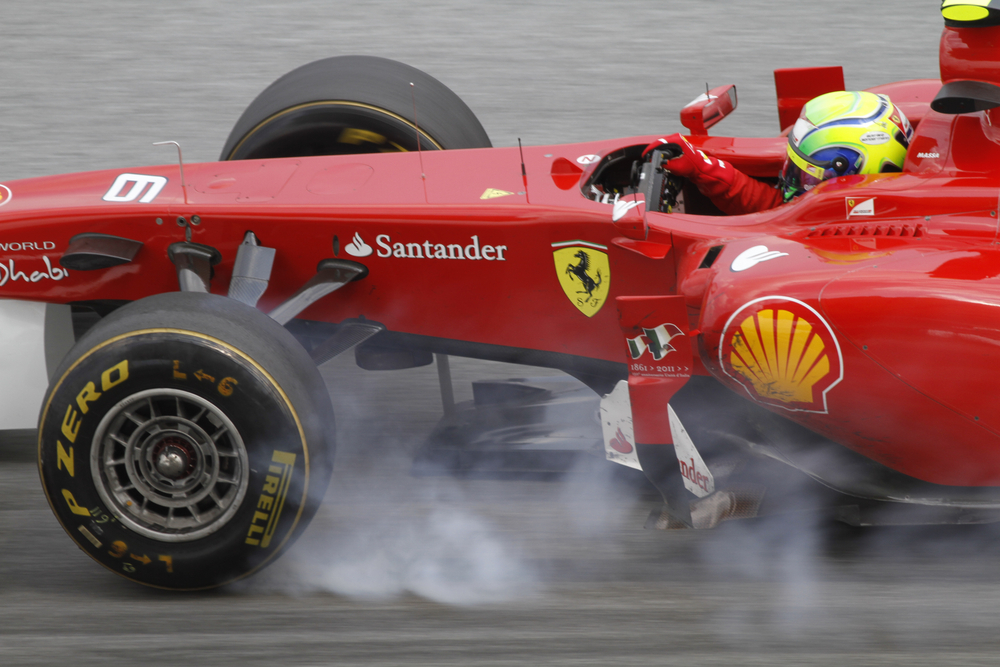
How a Driver Uses Trail Braking to Fix Balance During a Race
Even if a driver has been practicing before a race, there can still be times when his car’s setup isn’t perfect once he gets on the track. Often F1 drivers complain about a lack of balance after a race.
This happens when one end of the car has more grip than the other. F1 drivers often report understeering or oversteering after a race.
When an F1 driver uses trail braking, it helps fix these issues as the driver controls the car’s weight and grip when applying this driving technique.
If you have an F1 car that understeers, as soon as the car is turned into the corner, the car’s front pushes wide and won’t make the apex.
When this happens, there is limited front balance as the car’s front won’t have enough grip. In this scenario, a good F1 driver will understand that he needs to give the car’s front more grip on entry at a corner.
The driver keeps more weight over the front tires when he turns the car in by releasing the pressure on the brake pedal slightly later.
This allows the car’s front to dive in more and gives more weight and therefore more grip, fixing the balance issue.
Conclusion
Most F1 drivers use the advanced technique of trail braking. It is hard to perfect and requires a lot of practice. As soon as a driver masters the technique, he will drive faster on lap easily figure out smaller setup issues.
F1 drivers use trail braking during races for several reasons. This advanced driving technique has been mastered and used by the best F1 drivers globally. It might not be visible, but most experienced F1 drivers use trail braking. Trail braking is most noticeable in slower speed corners where F1 drivers want a quick exit.
A driver needs a lot of patience, time, and practice to learn how to trail brake. Trail braking, in theory, sounds like it is an effortless technique to master, but in reality, it is complicated.
Trail braking allows a driver to go faster because it slows down the car’s weight transfer and keeps the weight on the tires where they need the grip to go through the corner.
An F1 car’s front tires use every available grip during trail braking, resulting in faster exits and faster laps for drivers.
We hope this article gave you a clear understanding of trail braking and why F1 racing drivers use it all the time.

